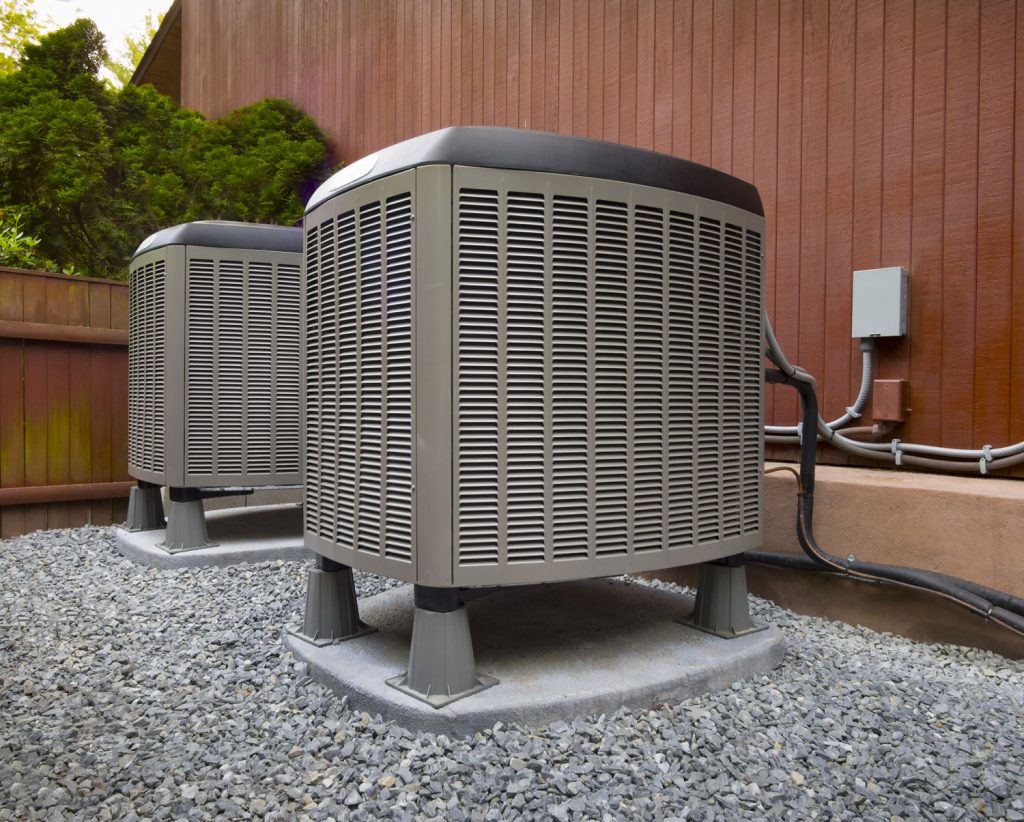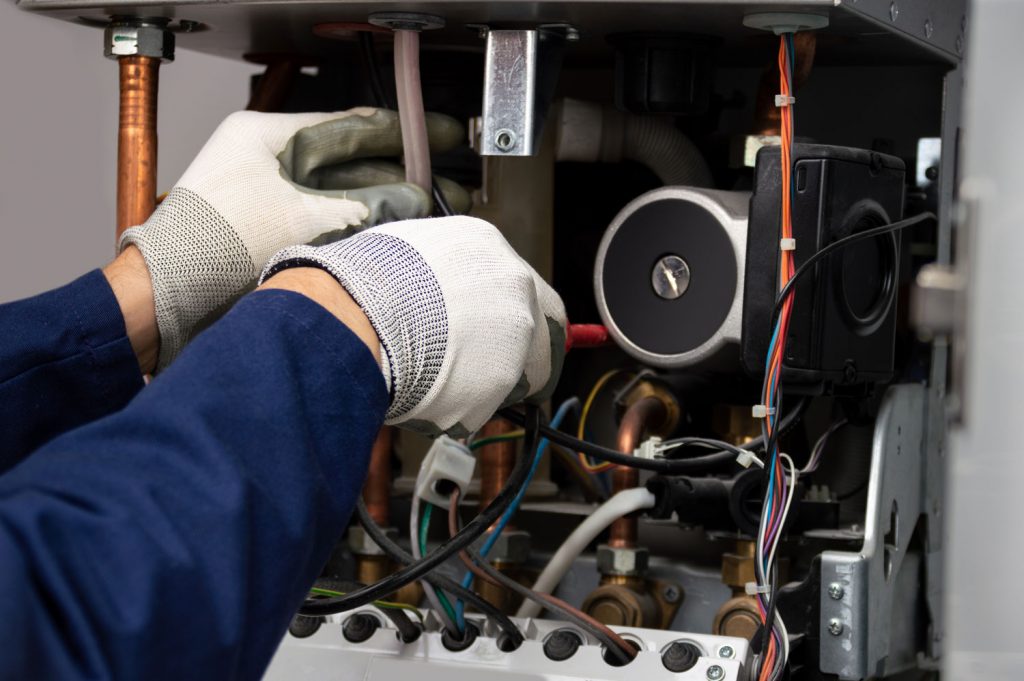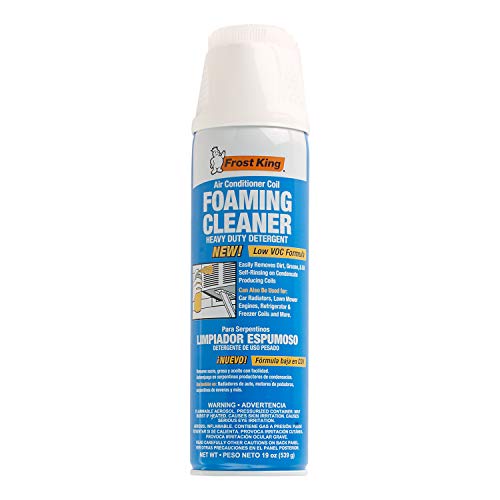The heat pump is an excellent alternative heating and cooling source for homes, but to remain functional, this appliance requires complete and consistent maintenance, including cleaning. So how does one complete a deep clean of their heat pump? We've done the research to give you instructions.
To clean a heat pump, you must:
- Disconnect power to the appliance.
- Remove the grille using a screwdriver.
- Clean the movable grille and suction grille with a vacuum cleaner.
- Spray the fins and coils with a specially formulated cleaning agent.
- Wipe anything left on the fins and coils with a dry cloth
- Clean the registers and ducts with an anti-mold cleaning agent.
- Replace or cleanse the filter.
We've given you some basic instructions to follow, but you may want more information and suggestions. You may also have other questions about maintaining this appliance. Keep reading to learn more.
![Heat pump HVAC unit on the side of a single family home, How To Clean A Heat Pump [Inc. Coil And Filter]](https://hvacseer.com/wp-content/uploads/2022/01/How-To-Clean-A-Heat-Pump-Inc.-Coil-And-Filter-683x1024.png)
Cleaning Your Heat Pump

Since cleaning your heat pump is crucial to its health and efficiency, we'd like to give you more detailed instructions on how to get this done.
How Often Should A Heat Pump Be Cleaned?
Professionals suggest cleaning your heat pump every 12 weeks, or roughly every three months. This may be needed more or less often, depending on the atmosphere and the frequency at which the heat pump has been cycling.
For example, if you live in an industrialized area with boggy air, you may need to clean the heat pump more often. On the other hand, if you live in an area where clean air and the climate are temperate, you may be able to go three months between cleanings without repercussions.
Your Supply List
Of course, it's good to be prepared before attempting to complete this project. Here is a list of supplies that you may need:
- Dry cloth
- A vacuum cleaner with a brush attachment
- Mild detergent
- HVAC foaming cleaning agent
- HVAC anti-mold deodorizer
- Water hose
- Screwdriver
The Grilles
Before beginning this process, you must turn off the power to the unit. You can do this by flipping the breaker switch to the area.
Remove the outer cover, movable grille, and top grille using your screwdriver. You can usually clean these parts easily using a vacuum brush attachment.
The Fins And Coils
Cleansing the fins and coils can be an easy task, providing that there has not been an extended amount of time between cleanings to allow a tremendous amount of build-up. Using your HVAC foaming cleaning agent, you will spray the fins and coils.
You will see it foaming, and this is when the agent is working to dissolve and remove the debris. You will allow this foam to sit for around 10 minutes before spraying it off with a gentle spray of water.
After you have done this, you may see some debris leftover. This debris should be soft and easily removed with a dry cloth.
Check out this foam coil cleaner on Amazon.
The Registers And Ducts
Cleaning the registers and ducts is unnecessary at every cleaning, but it is required if you've begun noticing a musty or off-putting smell in your home. Cleanse these parts using an anti-mold cleaning agent. At the same time, you should consider cleaning the condensate pans.
Take a look at this cleaning agent for mold on Amazon.
The Filter
Depending on your unit, you could have a permanent or temporary filter. Of course, you should remove and replace temporary filters monthly.
On the other hand, if you have a permanent filter, you will want to remove the filter from its place and cleanse it with a mild detergent and water. Do not use any brushes or sponges on the filter. Only use your hand to scrub away the debris gently.
How Much Is A Heat Pump Cleaning?
Of course, there may be instances in which a homeowner does not feel equipped to clean their heat pump on their own, and that's OK. It can be professionally done for anywhere between $80-$300.
The Heat Pump

The heat pump is an HVAC system that has only recently risen in popularity among homeowners. While many have a working knowledge of gas furnaces and electric air conditioners, many may not know much about the heat pump.
To troubleshoot and maintain this appliance, you must know what it is and how it works. So we'll take a few moments to bring you up to speed.
The Design
The heat pump was created by Robert C. Webber, an American entrepreneur and inventor, in the 1940s. While the invention was ingenious, it would take several decades for the technology to advance and grow until it was usable in residential homes in a wide array of climates.
Today, the heat pump is more and more widely used, even in the cool New England climate. It has many draws, including that it is energy efficient and eco-friendly. However, the most tempting aspect is that it provides both heating and cooling in one appliance.
How It Works

Furnaces work by pulling air into the system and heating it over coils heated by gas, but the heat pump does not operate by moving air. Instead, it works to heat or cool a home by absorbing and transferring heat energy.
When a home needs to be cooled, the heat pump pulls heat energy from the home's air and transfers it to the outdoors. When the house needs to be heated, the heat pump draws heat energy from the outdoors and moves it indoors.
There is both an indoor fan and an outdoor fan. The fan brings the air to the heat pump's coils, which absorb the heat energy. The heat energy is then traveled to the opposite end of the heat pump, where another set of coils is.
This is where the heat energy is deposited and heats the air on the other side, whether this is indoors or outdoors. The system can be set to work as a cooling or heating system by switching the reversing valve.
Maintaining Your Heat Pump
Now that you have a better idea of how a heat pump is designed and operates, we should discuss maintenance. This appliance's efficiency is defined by how well a homeowner cares for it, so this is essential information.
How Long Does A Heat Pump Last?
Heat pumps last on average 15-20 years, but the lifespan can certainly be shortened or lengthened depending on the owner's diligence in providing regular and prompt maintenance.
You may be thinking that this seems shorter than the lifespan of other HVAC appliances, such as gas furnaces and electric air conditioners. Still, it must be taken into account that this is an appliance that is used year-round. Thus, it will wear down more quickly.
What Maintenance Does A Heat Pump Need?

One of the most important aspects of maintaining your heat pump is ensuring that it receives professional servicing at least once per year. Although, twice per year [once before the cool season and once before the hot season] would be even better.
During the annual service of your heat pump, the HVAC tech will:
- Inspect filters, electrical wiring, and connections.
- Measure the electrical amperage.
- Check the blower motor and blower wheel.
- Ensure there is correct airflow.
- Check for refrigerant leaks.
- Check the thermostat and thermostat controls.
- Clean the drain lines.
- Check the condenser unit.
- Check the ducts.
As you can see, this is a vital part of maintaining your heat pump. A trained professional will verify that all of the components of the appliance's system are working correctly and are ready to provide efficient heating and cooling to your home throughout the year.
However, there are also a few things that the homeowner must do themselves, in-between times of professional maintenance. One of these is to keep the area around the exterior unit clear of debris. Vegetation growing around the area can cause problems with airflow and cause the system to become dirty.
Another maintenance task you can perform is cleaning or replacing the filter once per month. If the filter is clean and operational, this prevents less debris from entering the machine and dirtying up the system.
Do Heat Pumps Need To Be Cleaned?
The last but most important task is to clean the heat pump regularly. This will help keep the machine at top efficiency while preventing misoperations within its working parts.
In Conclusion
A heat pump can be a great investment in your home, and we understand that you would want to take great care of this investment, keeping it efficient and operational for as long as possible. Cleaning the unit is a large part of maintaining the unit. We hope our instructions and suggestions have given you more confidence to complete this maintenance.
Want to learn more about heat pumps? Visit these related posts:


